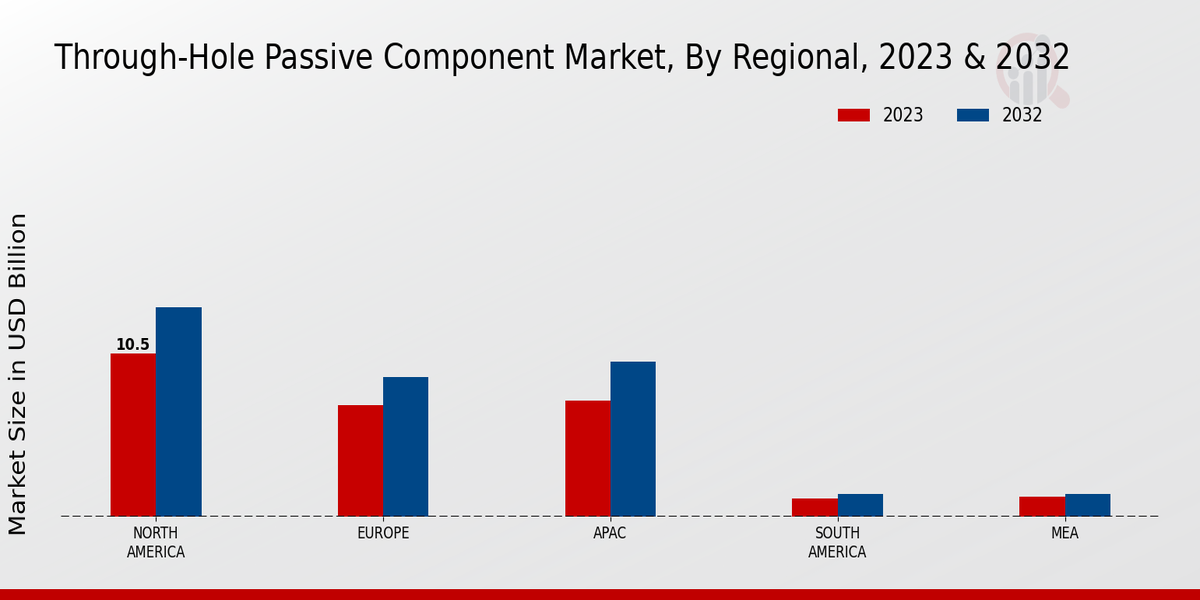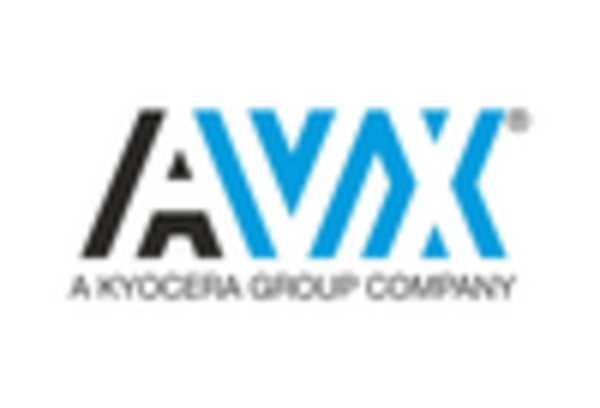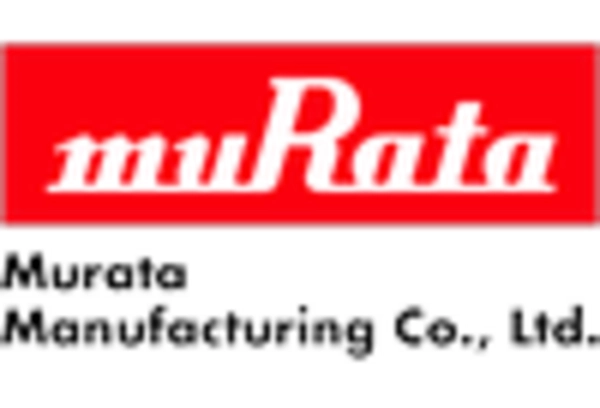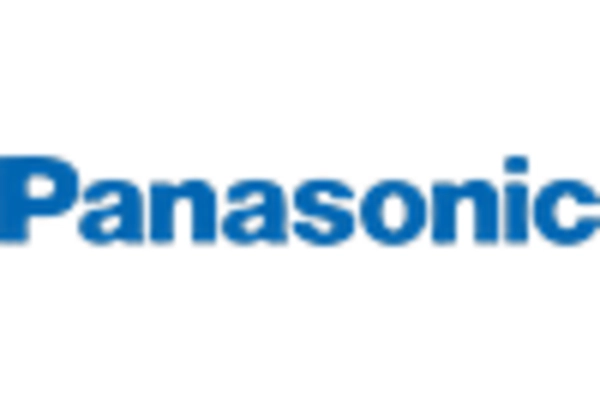Growth in Renewable Energy Sector
The Through-Hole Passive Component Market is poised to benefit from the growth in the renewable energy sector. As nations increasingly invest in sustainable energy solutions, the demand for electronic components used in solar inverters, wind turbines, and energy storage systems is likely to rise. In 2025, the renewable energy market is projected to reach approximately 2 trillion USD, creating a substantial opportunity for through-hole passive components. These components play a critical role in ensuring the reliability and efficiency of renewable energy systems. Manufacturers are thus encouraged to innovate and develop specialized passive components tailored for this sector, which could lead to enhanced performance and longevity of renewable energy technologies, ultimately fostering market expansion.
Expansion of Automotive Electronics
The Through-Hole Passive Component Market is significantly impacted by the expansion of automotive electronics. As vehicles become increasingly sophisticated, incorporating advanced driver-assistance systems (ADAS) and infotainment technologies, the demand for reliable passive components is expected to rise. In 2025, the automotive electronics market is anticipated to exceed 400 billion USD, with a substantial portion allocated to passive components. This trend suggests that manufacturers of through-hole passive components must adapt to the evolving requirements of the automotive sector, ensuring that their products meet stringent quality and performance standards. The integration of these components into automotive applications not only enhances vehicle functionality but also contributes to safety and efficiency, further driving market growth.
Emergence of Smart Grid Technologies
The Through-Hole Passive Component Market is influenced by the emergence of smart grid technologies. As energy distribution systems evolve to become more efficient and responsive, the demand for electronic components that support these advancements is expected to grow. In 2025, the smart grid market is projected to reach around 100 billion USD, creating a significant opportunity for through-hole passive components. These components are essential for ensuring the stability and reliability of smart grid systems, which rely on advanced communication and control technologies. Manufacturers are thus likely to focus on developing specialized passive components that meet the rigorous demands of smart grid applications, potentially leading to increased market share and enhanced product offerings.
Rising Demand for Consumer Electronics
The Through-Hole Passive Component Market is experiencing a notable surge in demand driven by the increasing consumption of consumer electronics. As households and individuals continue to adopt smart devices, the need for reliable passive components, such as resistors and capacitors, becomes paramount. In 2025, the consumer electronics sector is projected to reach a valuation of approximately 1 trillion USD, which directly influences the Through-Hole Passive Component Market. This growth is likely to be fueled by innovations in product design and functionality, necessitating the integration of high-quality passive components to ensure optimal performance. Consequently, manufacturers are compelled to enhance their production capabilities to meet this escalating demand, thereby propelling the overall market forward.
Increased Focus on Industrial Automation
The Through-Hole Passive Component Market is experiencing growth due to the increased focus on industrial automation. As industries strive for greater efficiency and productivity, the integration of advanced electronic systems becomes essential. In 2025, the industrial automation market is expected to surpass 300 billion USD, driving demand for various electronic components, including through-hole passive components. These components are integral to the functioning of automation systems, providing stability and reliability in operations. Consequently, manufacturers are likely to invest in research and development to create innovative passive components that cater to the specific needs of automated systems, thereby enhancing their market presence and contributing to overall industry growth.

















Leave a Comment